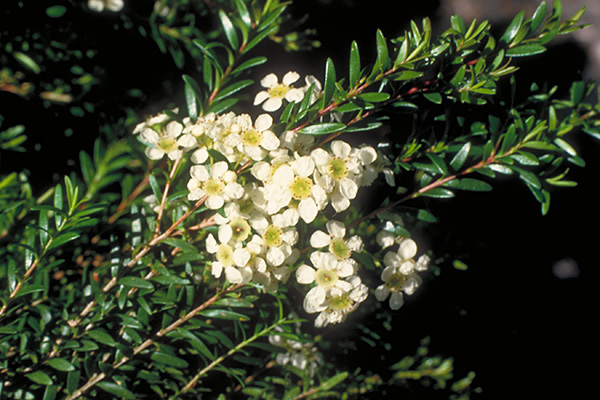General Description:
George Bentham in 1867 established a broad concept for the genus Baeckea but in recent years studies have shown that, because of differences within the group, many Baeckea species should be placed into other genera.
Initially, this species was regarded as a form of Baeckea virgata but research by A.R. Bean in 1997 relegated Baeckea virgata to plants native to New Caledonia. Bean reclassified Baeckea virgata into the reinstated genus Babingtonia together with a number of related species. One consequence of Bean’s work was that Australian species formerly included under Baeckea virgata were reclassified as other species within Babingtonia and this species became Babingtonia similis.
However, this classification has been further revised and plants within the ‘Babingtonia virgata‘ group have been reassigned to the new genus Sannantha. As a result, Babingtonia similis has become Sannantha similis.
For further details on the various taxonomic changes affecting Baeckea and Babingtonia, see Chamelaucium and its Relatives – Background.
Sannantha similis is a shrub to about 2 metres high, often rounded and compact in habit. The leaves are 9 – 17 mm long, linear to elliptical in shape. The small tea tree-like flowers are about 5 mm in diameter, white in colour and occur in groups of about 3 from the leaf axils towards the ends of the branches. Flowering occurs in late spring to late summer.
This species is probably best known in cultivation through several low growing cultivars (eg. Howie’s ‘Feathertips’). These are all hardy plants, suited to light or heavy soils as long as drainage is reasonable. They grow best in full sun to dappled shade and are tolerant of at least moderate frost.
Seed of most Sannantha species germinates well without pretreatment and S.similis is probably no exception. Seed, however, is difficult to collect as it is released from the small seed capsules when ripe. Cuttings of firm, current season’s growth strike readily. Named cultivars should only be propagated from cuttings to ensure the characteristics of the parent plants are retained.

Sannantha similis
Photo: Brian Walters
 Australian Native Plants Society (Australia)
Australian Native Plants Society (Australia)













